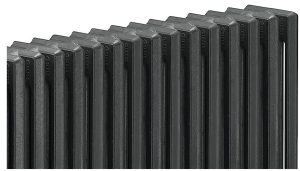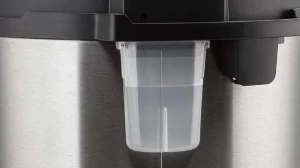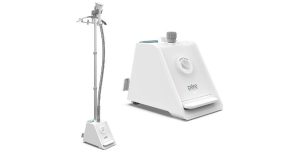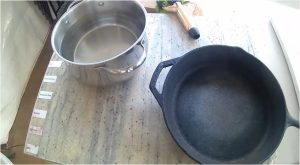Cleaning Methods for Vinyl Floors: Steam Mop or Alternative
No, a steam mop should not be used on vinyl floors. This is a common misconception that can lead to damage.
Vinyl floors, including vinyl plank flooring and luxury vinyl flooring, are popular for their durability and aesthetic appeal. They are designed to withstand heavy foot traffic and are easy to maintain. Yet, they have a vulnerability to heat and moisture, which makes the use of steam mops on them a risky proposition.
Steam mops, including popular brands like Shark, emit high-temperature steam. This steam can penetrate the seams of the vinyl flooring, causing it to warp or buckle. The heat can also cause the adhesive that holds the vinyl to the subfloor to loosen, leading to the lifting or curling of the vinyl. This not only compromises the appearance of the floor but also its longevity.
Moreover, the intense moisture from the steam mop can seep into the vinyl material, causing it to swell and distort. This can lead to irreversible damage, requiring costly repairs or replacement.
It’s also worth noting that using a steam mop on vinyl floors can void the manufacturer’s warranty, leaving the homeowner to bear the full cost of any damage.
Vinyl Floors and Steam Mops
Vinyl flooring, with its durability and aesthetic appeal, has become a popular choice for many homeowners. It’s easy to clean, resistant to water, and offers a wide range of designs. On the other hand, steam mops are a modern cleaning tool that uses heated water to produce steam for deep cleaning. They are efficient, eco-friendly, and can eliminate germs and bacteria without the need for harsh chemicals.
The question arises, can these two be paired together? The answer is a resounding no. Despite the convenience and efficiency of steam mops, they are not suitable for use on vinyl floors.
How Steam Mops Work
Steam mops are a revolutionary cleaning tool that uses the power of heat to clean surfaces. They work by heating water to a boiling point, which then produces steam. This steam is directed onto the surface through a mop head, lifting dirt and grime.
The high temperature of the steam not only cleans but also sanitizes the surface, killing up to 99.9% of germs and bacteria.
This makes steam mops an excellent choice for cleaning hard and non-porous surfaces such as tiles and sealed hardwood floors.
The Risks of Using Steam Mops on Vinyl Floors
Despite the benefits of steam mops, they pose significant risks to vinyl floors. Vinyl flooring is made from a synthetic material that is sensitive to heat and moisture. The high temperature of the steam can cause the vinyl to warp or buckle, damaging the floor’s structure and appearance.
The moisture from the steam can also seep into the seams of the vinyl flooring, causing it to lift or peel. This can lead to further damage, including mold and mildew growth beneath the flooring.
So, while steam mops are a powerful cleaning tool, they are not suitable for all surfaces. Vinyl floors, due to their sensitivity to heat and moisture, should not be cleaned with a steam mop.
Instead, it’s recommended to use a damp mop or a cleaner specifically designed for vinyl floors to keep them clean and in good condition.

Special Considerations for Different Vinyl Flooring Types
Not all vinyl floors are created equal, and understanding the specific needs of your flooring type can make all the difference in maintaining its longevity and luster.
Luxury Vinyl Tile (LVT) and Vinyl Plank Flooring (LVP): These popular options are designed to mimic the look of hardwood or stone. While they are generally more durable than traditional sheet vinyl, they can still be susceptible to moisture damage. Avoid excessive water when cleaning, and always wring out your mop thoroughly.
Sheet Vinyl: This type of vinyl flooring is typically more affordable and easier to install. It’s also relatively water-resistant, but it’s still essential to avoid soaking it. A damp mop with a mild cleaning solution is usually sufficient.
Vinyl Composition Tile (VCT): This type of flooring is often found in commercial settings due to its durability. However, it can be more porous than other vinyl types, making it susceptible to staining. Regular sweeping and mopping with a suitable cleaner can help prevent stains and keep your VCT floors looking their best.
Alternative Cleaning Methods for Vinyl Floors
Delving into the realm of alternative cleaning methods for vinyl floors, it’s crucial to understand that these surfaces require special care. Vinyl floors, known for their durability and aesthetic appeal, can be maintained effectively without the use of a steam mop.
1. Use Mild Dish Soap
Mild dish soap is a gentle yet effective cleaning agent for vinyl floors. Dilute a small amount of dish soap in warm water and apply it to the floor using a soft mop. This method is effective in removing dirt and grime without causing any damage to the floor’s surface. Rinse the floor with clean water after mopping to prevent soap residue from building up.
2. Baking Soda for Stubborn Stains
Baking soda is a natural cleaning agent that can be used to remove stubborn stains from vinyl floors. Make a paste of baking soda and water, apply it to the stain, and let it sit for a few minutes. Gently scrub the area with a soft cloth or non-abrasive brush, then rinse with clean water. This method is particularly effective for stains caused by food, ink, or other substances.
3. Vinegar Solution for Deep Cleaning
A vinegar solution can be used for deep cleaning vinyl floors. Mix one cup of apple cider vinegar with a gallon of hot water, then mop the floor with the solution. Vinegar’s natural acidity helps remove dirt without leaving a residue, making it an excellent choice for deep cleaning. Finally, rinse the floor with water to remove any vinegar smell.
4. Use of Specialized Vinyl Floor Cleaners
Specialized vinyl floor cleaners are available in the market and are specifically designed to clean vinyl floors without causing any damage. These cleaners are usually non-abrasive and pH-balanced to ensure they clean effectively without harming the floor’s surface. Always follow the manufacturer’s instructions for the best results.
5. Regular Sweeping and Vacuuming
Regular sweeping and vacuuming are essential for maintaining the cleanliness of vinyl floors. These methods help remove dust and dirt before they can become embedded in the floor’s surface. Use a soft broom or a vacuum cleaner with a “hard floor” setting to avoid scratching the vinyl.
6. Use of Microfiber Mops
Microfiber mops are an excellent tool for cleaning vinyl floors. They are gentle on the floor’s surface and can effectively remove dirt and grime without the need for harsh chemicals. Microfiber mops can be used dry for dusting or damp for a more thorough clean.
So, there are numerous alternative methods for cleaning vinyl floors without the use of a steam mop. By using these methods, you can keep your vinyl floors clean and in excellent condition for many years to come.
Learn More: Bissell Steam Mop Leaking From Back Vent! Causes And How To Fix It





